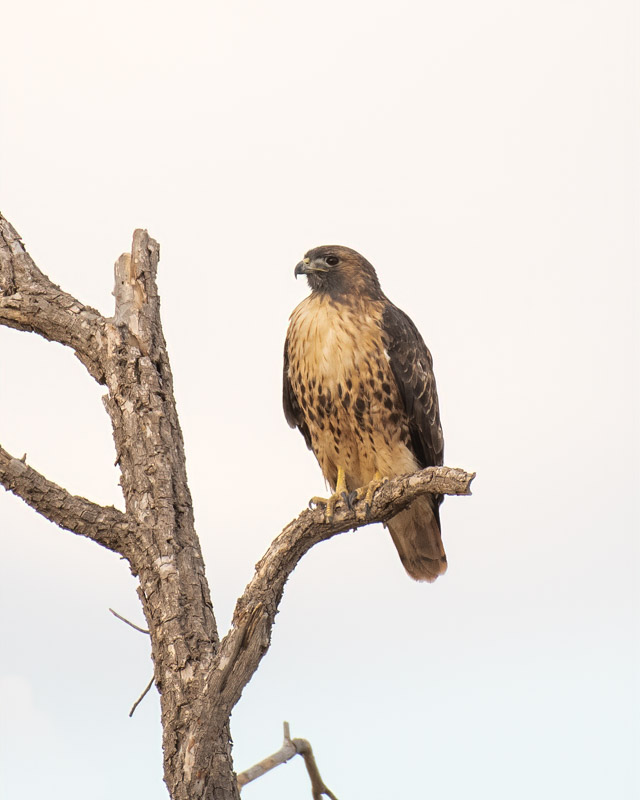By Dan Weisz
Our true “snowbirds” are returning to southern Arizona. Many wintering raptors make their homes here during the winter when their prey moves underground up north. One beautiful bird I saw in Marana was this adult rufous morph Red-tailed Hawk. This type of Red-tail is reddish-brown on the chest with a dark belly. Most other Red-tails are pale below with a streaked belly.
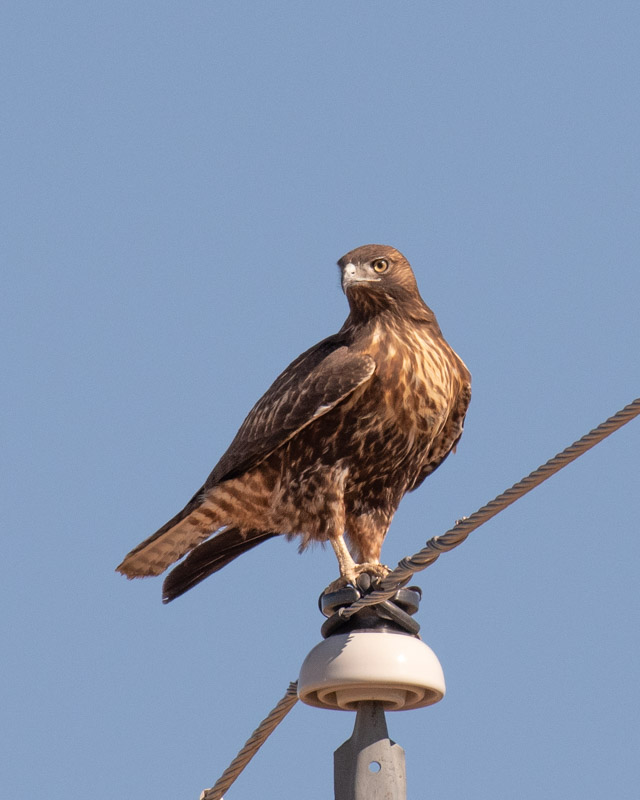
And in flight, this rufous morph Red-tail shows another differences from most other Red-tails. Most Red-tails have a dark bar on the leading edge of their wings, called a patagial mark. This bird does have a patagial mark but the entire wing lining is also dark, more so than a typical Red-tail would have.
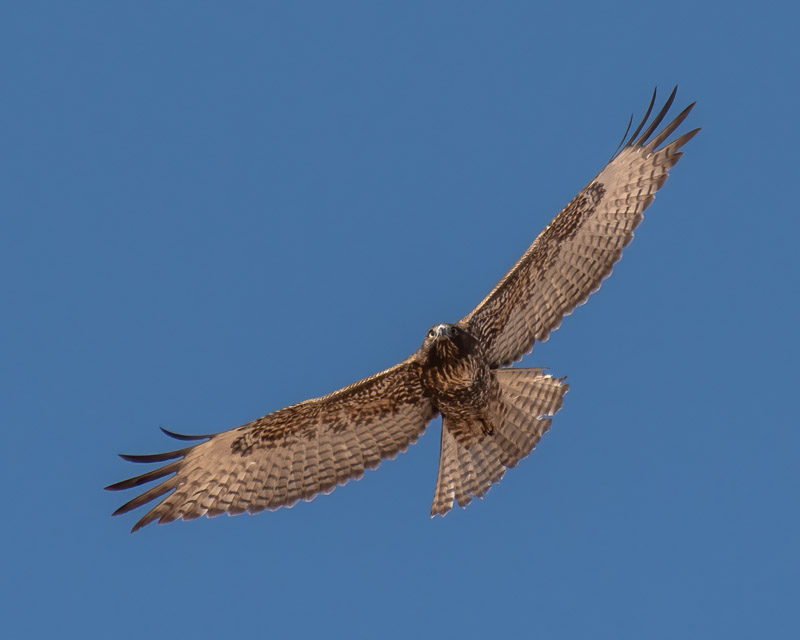
A week later I traveled to the Santa Cruz Flats area, northwest of Tucson. In the winter, this open desert is home to many visiting raptors. I was pleased to see three different species of falcons that morning. Considering that we only have six falcon species in North America, that was a very good morning. There were a number of American Kestrels, a more common falcon in this area. The brown wings let us know this is a female.
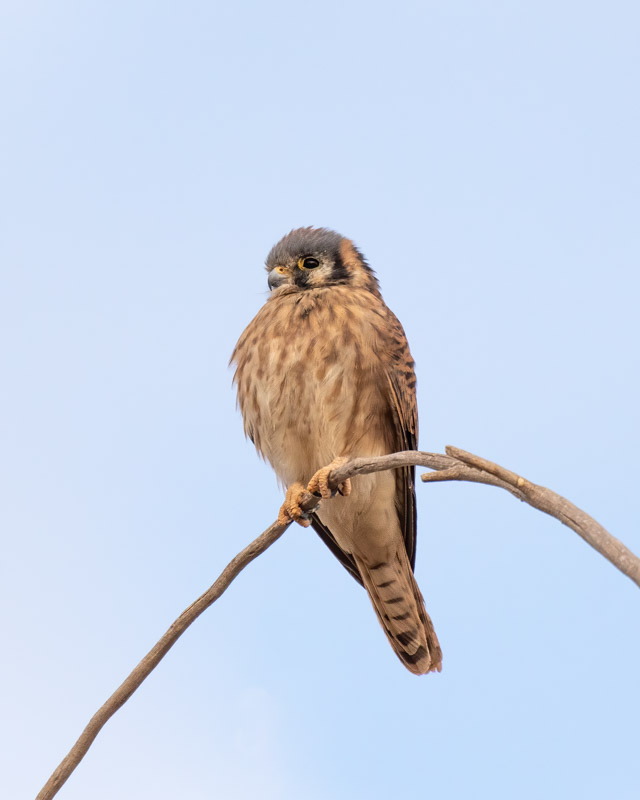
This is the same bird on the same branch. I drove forward a bit in order to get some blue sky in the background, and the bird followed me with interest. Kestrels have two black slashes on the sides of their face, whether those are called sideburns or mustaches depend on the language of your particular age group!
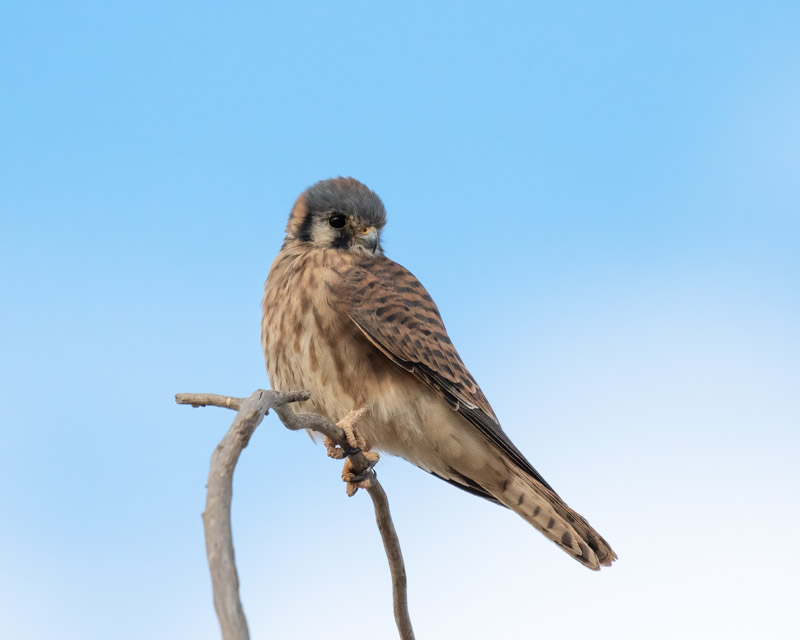
A bit further down the road I found a Merlin. That was falcon species number two! Merlins are a tiny bit bigger than Kestrels, who are the size of Mourning Doves. But Merlins are heavier birds. Merlins can have very a light ‘mustache’ on their face compared to the two prominent black slashes that kestrels have.
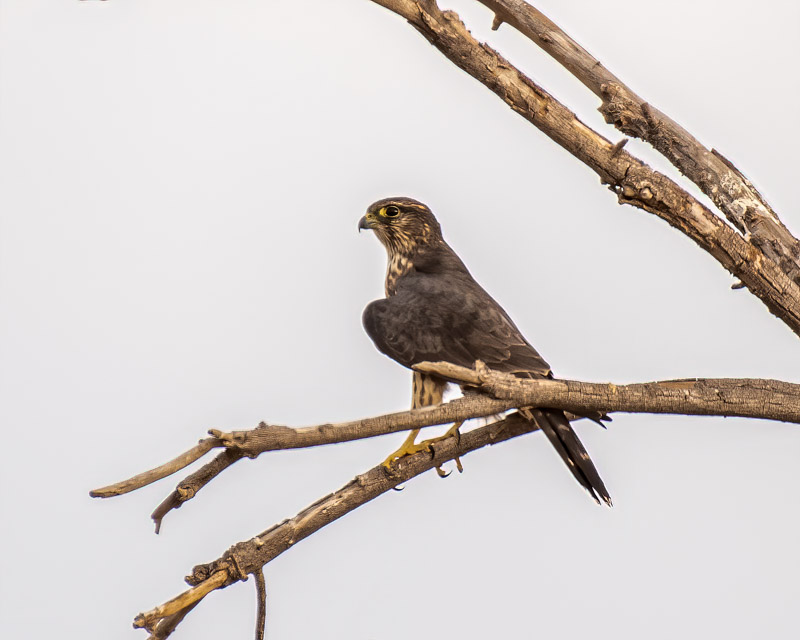
There are three subspecies of Merlins in America and this one is part of the “Taiga” subspecies. The brown color lets us know this is either a female or a juvenile male.
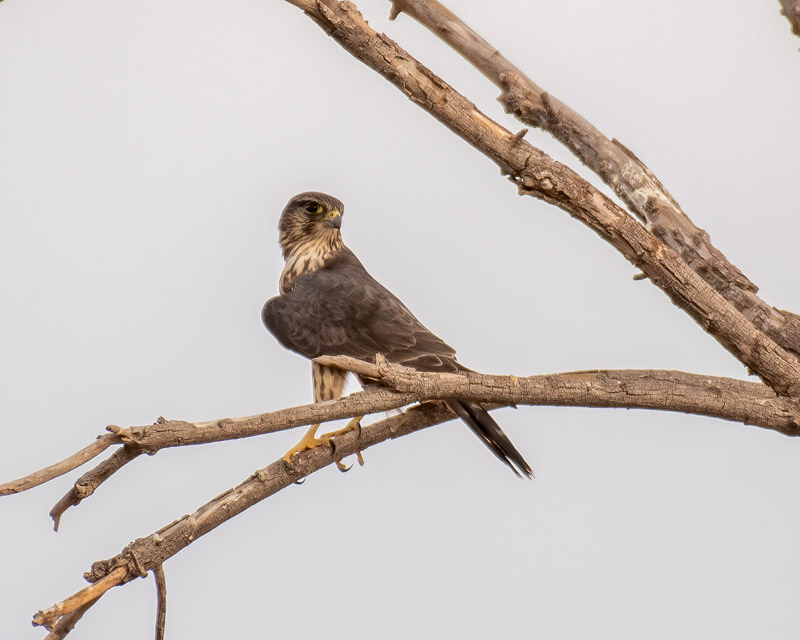
The range map for Merlins lets you see how different their summer range is from their winter range. They are barely in the United States during their summer breeding season.
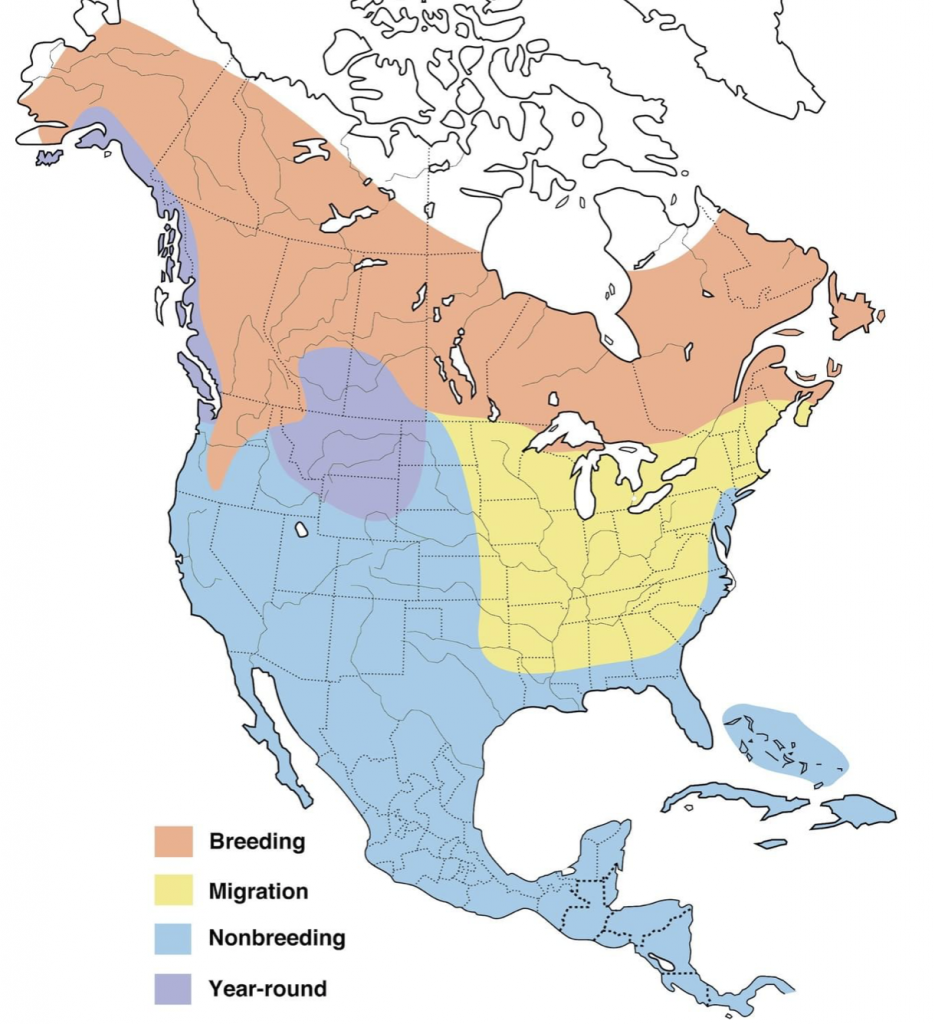
When the Merlin took off, it was fast! I was able to get a shot of it from a distance. The underwings of Merlins are very dark.
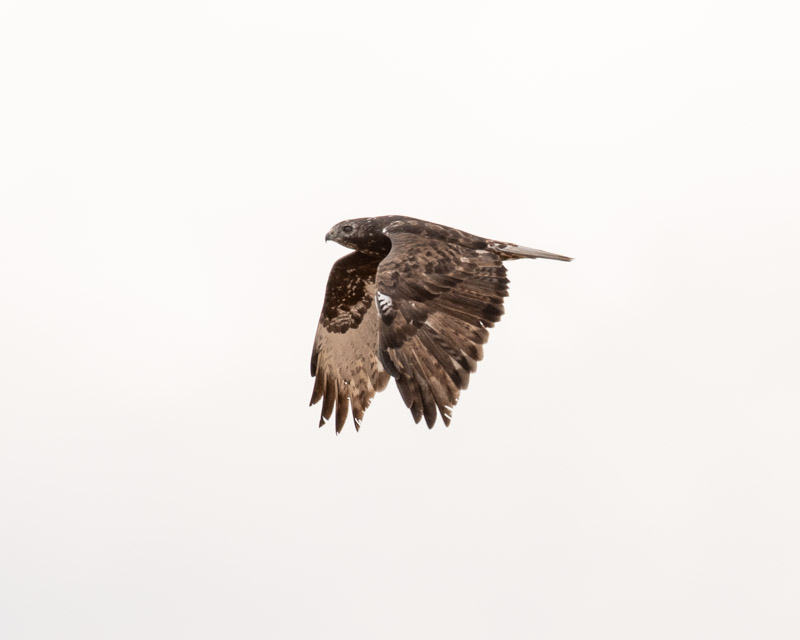
And then a bit later I found my third falcon species: the Prairie Falcon. Prairie Falcons have that white stripe above their eye and one black slash on their face. That slash is called a malar stripe (malar meaning cheek). The bold streaks on this bird lets us know this is a juvenile. Prairie Falcons are larger than Kestrels and Merlins, and almost as large as Peregrine Falcons.
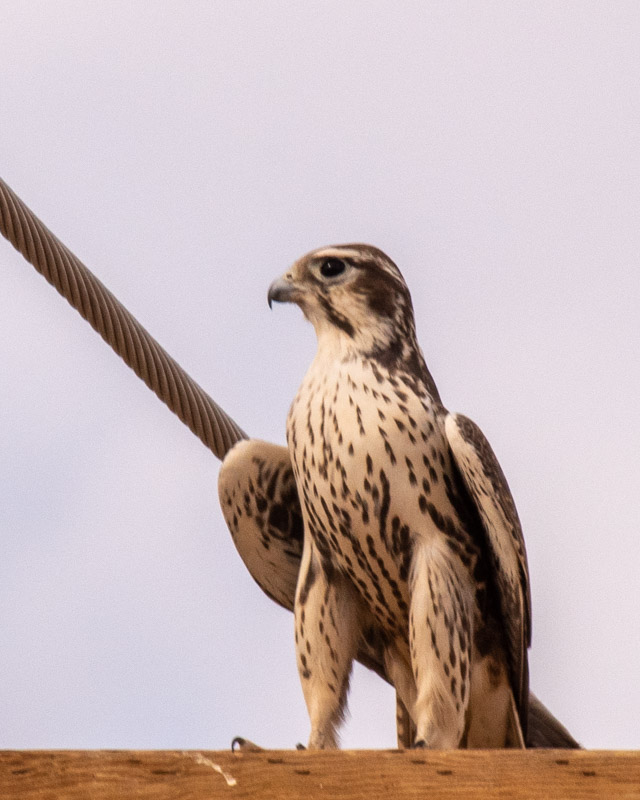
A close-up of this Prairie Falcon reveals a falcon feature in its bill. Falcons have what is called a tomial tooth. This is a protrusion on the upper bill that fits into a notch on the lower bill and is used for killing prey. Falcons catch their prey with their feet but they use their tomial tooth to quickly kill their prey by bting their necks to sever the vertebrae. It is a very efficient tool.
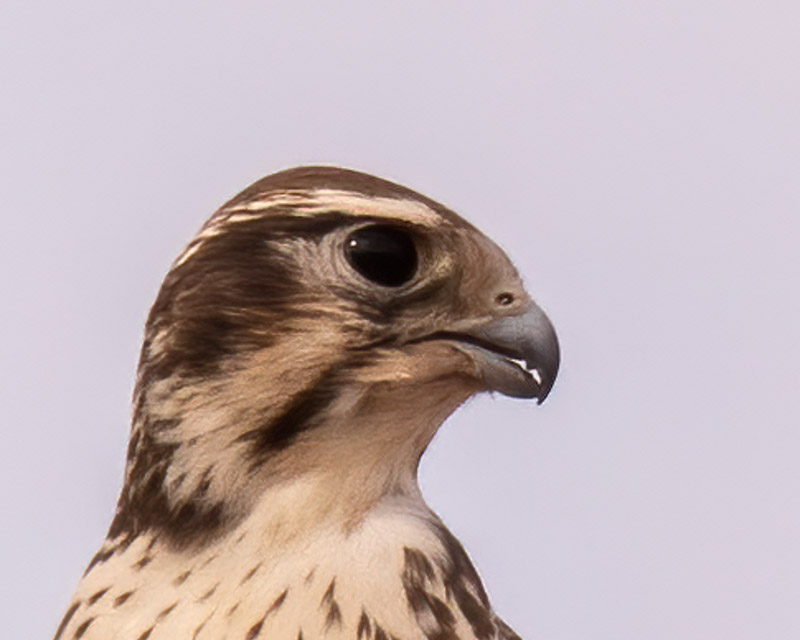
On down the road I came across another Prairie Falcon. Notice how the spotting on its belly is different from the bird above? This bird was very relaxed on the crossbeam.
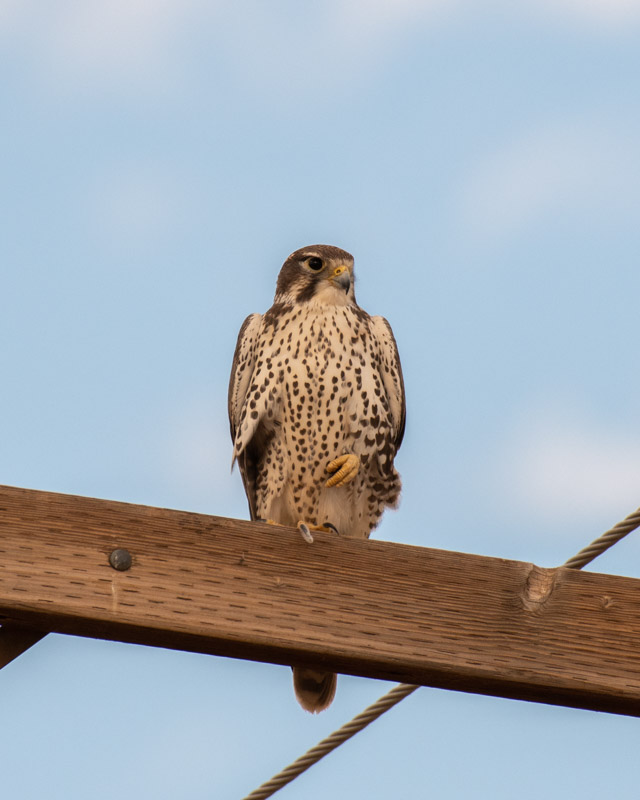
And then the Prairie Falcon got set to take off. Here you can see its pointed wings
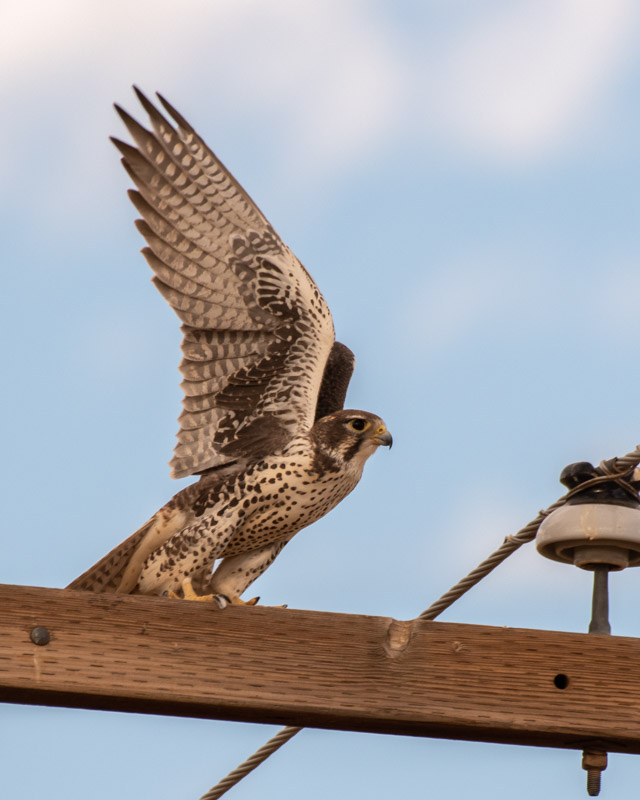
And then it was airborne, circling around the farm field several times before heading off in the distance. All falcons are very fast and this Prairie Falcon was no exception. In flight, it was easy to see the “armpit” under the wing of the bird. This dark spot differs from the underwings of other falcons and when they are flying in the distance is a good feature to use to ID them.
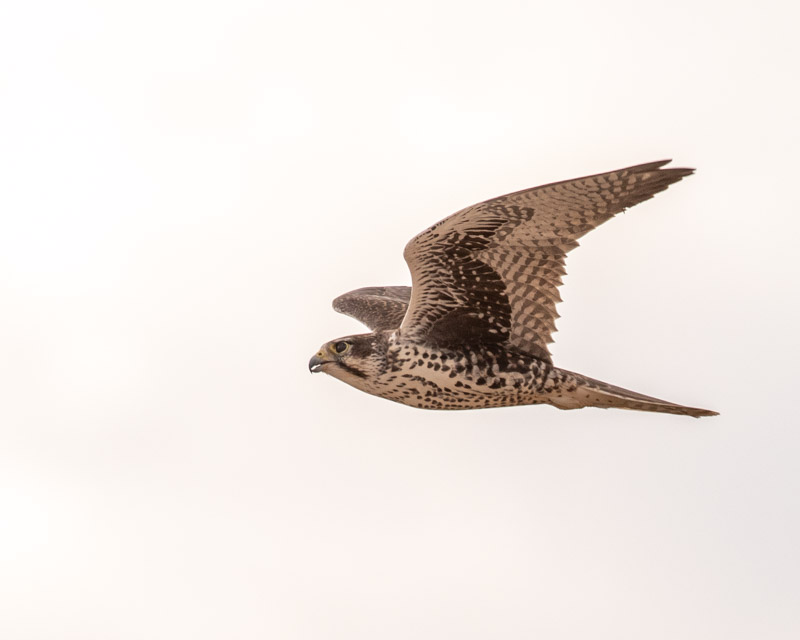
And finally, a reminder that there are many, many Red-tailed Hawks all through the area. Even driving around the outskirts of Tucson now it is easy to find Red-tails perched on telephone poles, power lines, and tall trees. The Red-tailed Hawk below was perched in a snag next to a farm house. They are welcome snow birds indeed.
